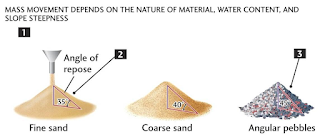Depot Formulation and its Type
Depot formulations are a type of drug delivery system that allows for the slow release of medication over a prolonged period of time. These formulations are designed to provide long-lasting therapeutic effects, reduce the frequency of dosing, and improve patient adherence to medication regimens. Depot formulations have been used to treat a variety of diseases, including cancer, diabetes, schizophrenia, and opioid addiction.
Depot formulations can be classified into several types based on their composition, release mechanism, and administration route. Some common types of depot formulations include:
- Injectable Depots: Injectable depots are formulations that are administered via injection and form a solid or semisolid depot at the injection site. These depots can slowly release the medication over a period of weeks to months. Injectable depots can be composed of biodegradable polymers, lipids, or inorganic materials.
Biodegradable polymers, such as poly(lactic-co-glycolic acid) (PLGA) and poly(caprolactone) (PCL), have been extensively used to develop injectable depots. These polymers can be tailored to degrade at a specific rate, allowing for the controlled release of medication. Injectable depots composed of lipids, such as long-chain fatty acids, have also been developed for the sustained release of medication.
- Implantable Depots: Implantable depots are formulations that are surgically implanted into the body and release medication over a period of months to years. Implantable depots can be composed of biodegradable or non-biodegradable materials.
One of the most common implantable depots is the etonogestrel implant, which is a small, flexible rod that is implanted into the upper arm to provide long-term contraception. The etonogestrel implant is composed of a non-biodegradable polymer and releases the medication over a period of three years.
Biodegradable implantable depots, such as PLGA and PCL, have also been developed for the sustained release of medication. These depots can be tailored to degrade at a specific rate, allowing for the controlled release of medication over a prolonged period of time.
- Transdermal Depots: Transdermal depots are formulations that are applied to the skin and release medication over a period of days to weeks. Transdermal depots can be composed of a variety of materials, including polymers, lipids, and hydrogels.
One of the most common transdermal depots is the nicotine patch, which is used to help people quit smoking. The nicotine patch is composed of a polymer matrix that slowly releases nicotine over a period of 24 hours. Other transdermal depots, such as lidocaine patches, have also been developed for the treatment of pain.
- Intrauterine Depots: Intrauterine depots are formulations that are inserted into the uterus and release medication over a period of months to years. Intrauterine depots can be composed of a variety of materials, including copper, levonorgestrel, and progesterone.
One of the most common intrauterine depots is the levonorgestrel-releasing intrauterine system (LNG-IUS), which is used for contraception. The LNG-IUS is composed of a small, T-shaped plastic frame that is inserted into the uterus and releases levonorgestrel over a period of five years.
- Oral Depots: Oral depots are formulations that are taken orally and release medication over a period of hours to days. Oral depots can be composed of a variety of materials, including polymers and lipids.
One of the most common oral depots is the extended-release tablet, which is designed to release medication over a prolonged period of time. Extended-release




Comments
Post a Comment